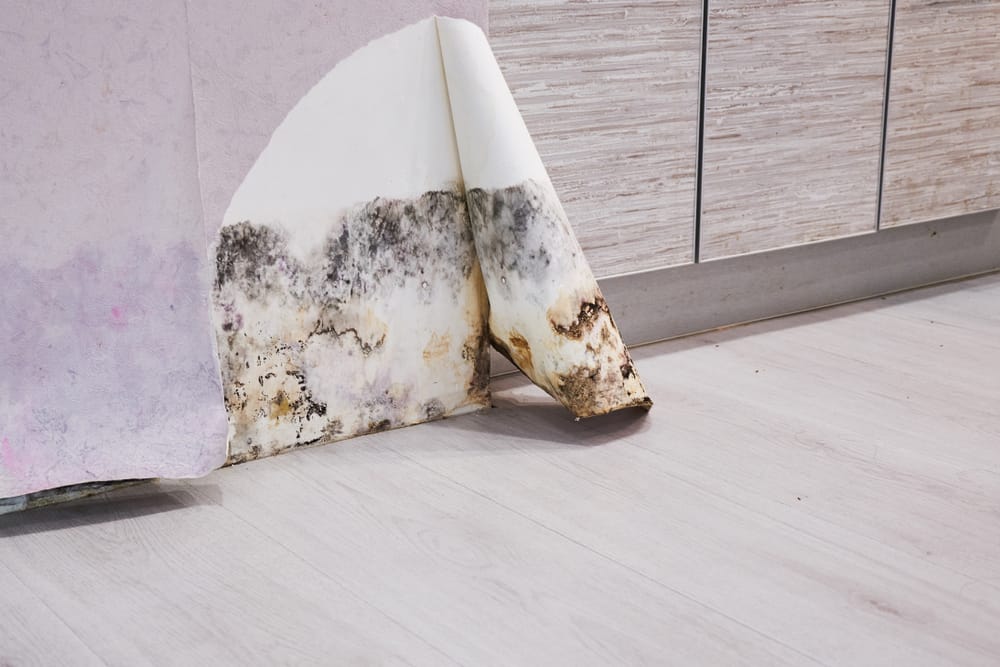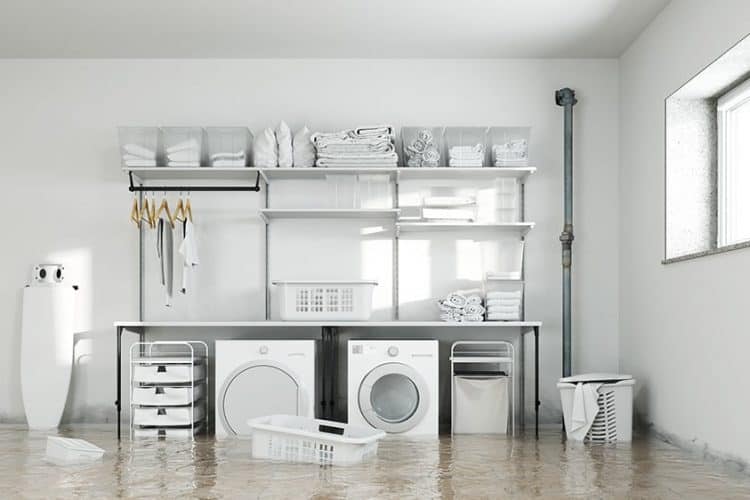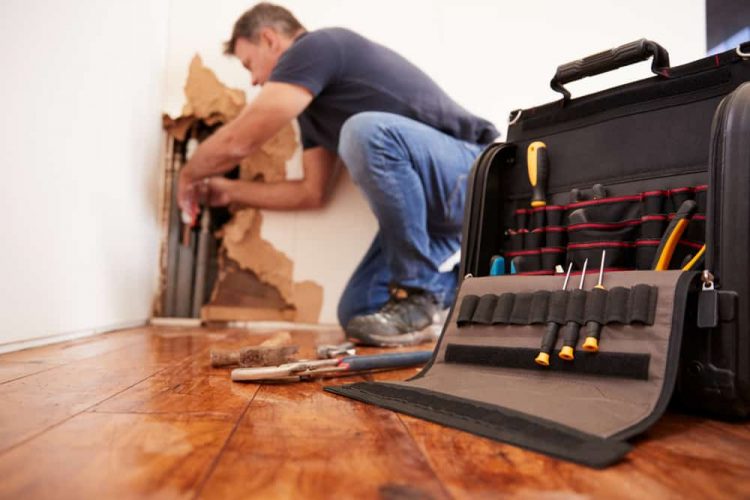
Finding mold in your home can be upsetting and make you worry about the health and safety of your indoor environment. You will want to address the mold issue as soon as possible because there can be structural and health impacts if it’s not remediated. Mold that’s left unmanaged will continue to grow and establish, and depending on where it is, the spores can migrate and colonize other parts of the home or building.
Being aware of the presence and potential impact of mold can help you make the best decisions for your property, whether you have a mold issue currently, or you end up facing one in the future.
The most common types of mold in homes
There are thousands of types of mold (estimates suggest at least 100,000!) in the world, and we are always surrounded by a variety of mold spores no matter where we go. Whether you’re indoors or outdoors, it is impossible to determine the exact type of mold growing based on visual appearance alone. However, when it comes to identifying mold types in your home, there are a few that are most commonly found indoors. Their spores enter and settle inside when we open doors or windows, but they don’t begin colonizing unless moisture levels reach a certain point.
Four common types of mold in and around the home include:
- Cladosporium
- Where it can be found: Outdoors on plants and decaying leaves
- Typical color: Dark green, brown, or black
- Penicillium
- Where it can be found: In soil, on fruit, and on other organic foods
- Typical color: Green or blue
- Alternaria
- Where it can be found: Commonly on plants
- Typical color: Usually green, black, or gray
- Aspergillus:
- Where it can be found: In soil, plants, and trees
- Typical color: Varies greatly depending on the exact species
In general, these and other indoor molds grow best in areas with high humidity and excess moisture, which is why mold growth is so common after water damage events. But when you find growth, identifying the mold types in your home or building is not as important as eradicating the mold issue. Moreover, the only way to definitively identify the type and species of mold is through mold testing, which is typically conducted by an indoor environmental specialist. However, bringing in a third party to do mold testing is not necessary or required for proper mold remediation.
Health hazards posed by mold
As we encounter different kinds of mold on a daily basis, simply coming into contact with mold spores once is not going to cause major health problems. Health issues can arise when you’re exposed to a high concentration of mold spores in a confined area (such as your home), or can be intensified if you suffer from a chronic health condition. Prolonged exposure to high concentrations of mold indoors can also increase health impacts.
According to the Environmental Protection Agency (EPA), allergic reactions to mold are common. Some of the issues that can be exacerbated by mold include:
- Hay fever symptoms such as sneezing, runny nose, red eyes and a skin rash
- Asthma attacks (in people with asthma)
- Irritation of the eyes, nose, throat, skin or lungs
If you know or suspect there’s mold in your home, younger and older family members, someone who has a chronic respiratory condition, or someone who is allergic to mold are most likely to experience problems as a result of the infestation. This is one of the many reasons why it is important to have mold removed as soon as possible.
Can mold in my home be toxic?
According to the CDC, there are certain rare molds that are toxigenic, which means they produce toxins, typically as a result of their digestive process. It is rare, but possible, that toxigenic mold can contribute to health conditions. It is important to remember that the appearance of mold alone is not an indicator of its danger level, and you do not need to identify the specific type of mold before remediating it. Treat any mold in your home the same way and focus on having it removed.
While mold growth can be unnerving, consider it a sign that you need to get the problem under control – have the mold removed, the area cleaned and sanitized, and preventative measures put in place. If you are unsure about addressing mold on your own due to health and safety concerns, simply call a qualified mold remediation professional and they’ll take care of it.
Removing mold yourself
Some homeowners will attempt mold removal on their own, but calling an expert is the only way to ensure the mold will be properly removed in its entirety. Having worked with thousands of homeowners and property managers throughout our careers, we handle a lot of calls from people who thought they had the problem rectified, only to realize the mold still persisted.
The EPA recommends that any area greater than 10 square feet should be addressed by a mold removal and remediation specialist. 1-800 WATER DAMAGE has an overview of our mold remediation process that explains some of the steps we take for mold removal and why you may not want to tackle the mold issue on your own.
What about hidden mold in my house?
As noted earlier, mold can establish and grow in areas with high humidity and excess moisture. These areas can be visible to the eye, such as in the bathroom, or they can be hidden from your view. Some hidden areas where mold can develop include:
- Inside walls. Mold can hide on the backside of drywall, paneling, or wallpaper, especially in a room that has high moisture or humidity. A slowly leaking pipe with condensation can often be the culprit in these situations. If insulation becomes damp, it can provide the perfect habitat for mold development behind walls.
- Ceilings. Mold can also hide behind ceiling tiles, perhaps from a damaged vent seal, roofing materials issues, or other leaks in inside-to-outside home access points.
- Carpets and rugs. The undersides of carpets, rugs, and pads can easily hide mold that develops from a pet accident or a spill that went unnoticed. The focus is normally on the visible side of carpets and rugs, but underneath is where problems can develop.
- Ductwork. Mold spores find their way inside the ductwork and can begin growing in areas with frequent condensation. This creates more spores that can then be transported throughout your home to other high-moisture, high-humidity areas that are good incubation places for new mold growth.
- Cabinets. Cabinets can be a trap for humidity and a perfect breeding ground for mold as they have little ventilation. In kitchens, laundry rooms, and basements where moisture levels are higher, it is not uncommon to find mold in cabinets.
Contacting a professional service
Professional mold removal and remediation services, like 1-800 WATER DAMAGE, have trained and certified technicians on staff who can address mold and complete the removal and remediation process to ensure your home is safe. Here’s when to call a professional:
- You think you have cleaned up the mold but you can still smell it
- There are still signs of water damage and mold growth after your own remediation efforts
- You’re just not sure if you’ve gotten all the mold removed
- Everything seems ok, but you notice that health issues triggered by mold are persisting
- The water that damaged your home was contaminated
- There’s mold in your HVAC system
Calling the professionals at 1-800 WATER DAMAGE
If you have concerns about mold in your home, our team of friendly experts is here to help. Not only does professional mold remediation offer peace of mind, but it can also prevent a serious mold problem from expanding into a larger infestation that becomes more damaging, difficult to manage, and costly.
For more information about mold removal, remediation and prevention for the future, contact 1-800 WATER DAMAGE today by filling out a form online or calling 1-800-928-3732.



